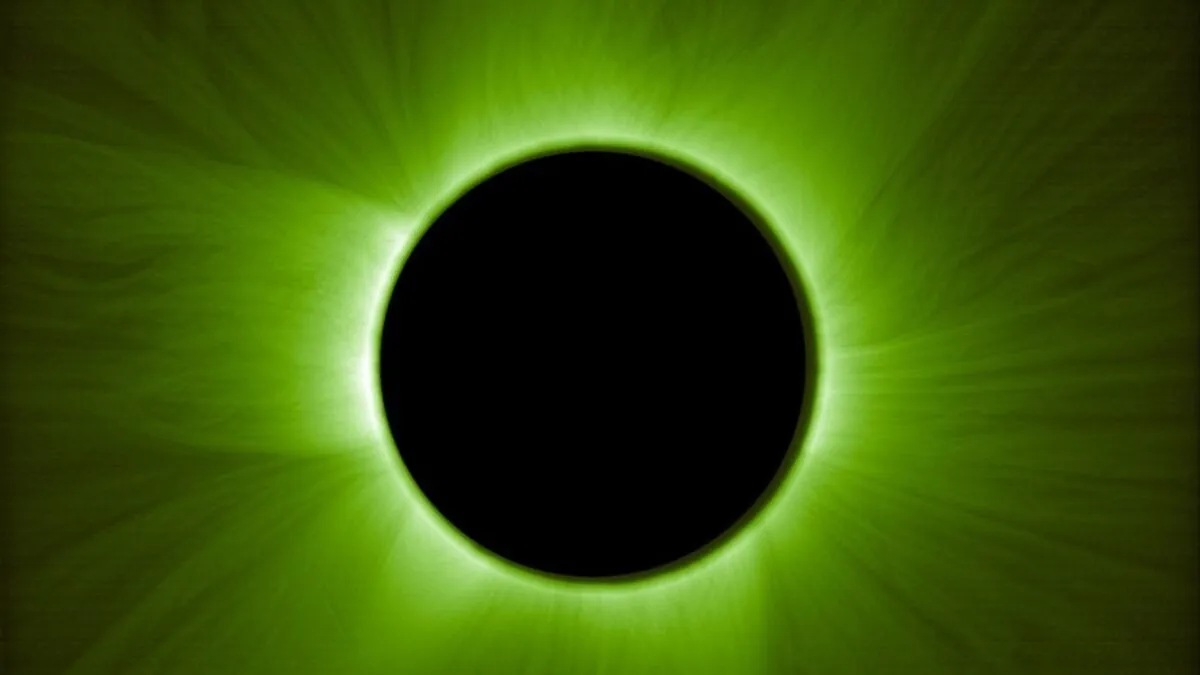
The Sun’s outer atmosphere, known as the corona, is a captivating spectacle that only reveals itself during total solar eclipses. These celestial events occur approximately every 18 months on Earth and are visible from a narrow path. For scientists, total solar eclipses present a unique opportunity to observe the Sun’s tumultuous surface. However, thanks to advancements in technology, researchers no longer have to wait for these cosmic events.
On Monday, June 16, 2023, the European Space Agency (ESA) announced a remarkable achievement: the Proba-3 mission successfully created the world’s first artificial total solar eclipse. This innovative mission involves two satellites, the Occulter and the Coronagraph, which autonomously aligned in space to obscure the Sun’s surface. This groundbreaking alignment allowed the Coronagraph to capture stunning images of the corona, showcasing the potential of artificial eclipses for scientific exploration.
The Proba-3 mission was launched on December 5, 2024, propelling the Occulter and Coronagraph into solar orbit. By May, these two satellites achieved an unprecedented milestone: they autonomously aligned in space with millimeter precision (0.04 inches) and maintained their relative positions for hours without any intervention from ground control. To create the artificial eclipse, the satellites needed to be approximately 500 feet (150 meters) apart, allowing the Occulter’s 4.6-foot (1.4-meter) disc to cast a 3-inch (8-centimeter) shadow on the Coronagraph’s optical instrument. This alignment effectively obscured the Sun's surface from the Coronagraph's perspective, facilitating the capture of the wispy corona.
Andrei Zhukov, principal investigator for the Association of Spacecraft for Polarimetry and Imaging Investigation of the Corona of the Sun (ASPIICS) at the Royal Observatory of Belgium, expressed his excitement: “Our ‘artificial eclipse’ images are comparable with those taken during a natural eclipse. The difference is that we can create our eclipse once every 19.6-hour orbit, while total solar eclipses only occur naturally once or, very rarely, twice a year. Moreover, natural total eclipses last only a few minutes, whereas Proba-3 can sustain its artificial eclipse for up to 6 hours.”
The initial images obtained from this artificial eclipse offer a glimpse into the valuable data that the Proba-3 mission will generate. Studying the corona is vital for several reasons. For instance, the corona is responsible for driving the solar wind—a continuous flow of charged particles from the Sun into outer space—as well as explosive jets of highly magnetized plasma known as coronal mass ejections. Observing these phenomena is essential for understanding solar weather, which can significantly impact Earth’s satellites, communication systems, and power grids.
Insights gained from the Proba-3 mission and future corona-imaging missions could enhance scientists' ability to prepare for the potential threats posed by severe solar storms. In May 2023, participants from various U.S. agencies conducted the first-ever solar storm emergency drill, which revealed significant gaps in the scientific community’s ability to forecast space weather and protect critical infrastructure.
Additionally, the corona may hold the key to solving a long-standing scientific mystery. This outer layer of the Sun’s atmosphere extends millions of miles into space but somehow reaches temperatures approximately 200 times hotter than the Sun's surface. Experts refer to this puzzling phenomenon as the coronal heating problem, which remains “one of the most vexing questions in modern solar physics.” The Proba-3 mission aims to address this issue by utilizing the Coronagraph’s optical instrument to study the corona in close proximity to the Sun’s surface. This state-of-the-art instrument minimizes stray light interference, enabling it to capture finer details and detect fainter features than previous coronagraphs.
“Current coronagraphs are no match for Proba-3, which will observe the Sun’s corona almost to the edge of the solar surface,” stated Jorge Amaya, space weather modeling coordinator at ESA. “So far, this was only achievable during natural solar eclipses.” Beyond its contributions to solar science, the Proba-3 mission also sets the stage for autonomous precision formation flying, a capability that will be crucial for future multi-spacecraft missions, such as ESA’s Laser Interferometer Space Antenna (LISA).